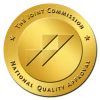In adolescents, especially those in middle school and high school, the stresses of life can create incredible damage to self-esteem and overall well-being. You may recognize when your child is struggling with peer pressure, loneliness, and perhaps even substance use. Yet it can be difficult to see when self-harm is happening, and even more difficult to understand why.
What Is Self-Harm?
Self-harm occurs when a person hurts themselves without any intention of killing themselves. This often refers to cutting or any type of non-suicidal self-injury. It can occur over a period of time, worsening as it goes on. In all situations, you should understand that self-harm is a very real indication of a person’s mental health needs.
Some examples of self-harm in teens include:
- Carving
- Picking skin or pulling hair
- Head bagging
- Scratching
- Marking
- Cutting
- Biting
- Tattooing
- Bruising
- Excessive body piercing
Why Do Adolescents Self-Harm?
Self-harm is not a harmless phase but an indication that a person needs mental health support. There is no simple, single cause for the onset of self-harm. It can occur for many reasons and across all cultures and socioeconomic levels. Some of the reasons teens may engage in self-harm could include:
- Stress relief. A person who is self-harming may be seeking an endorphin boost without realizing it. Endorphins are hormones that can improve mood. They are released into the bloodstream when a person suffers an injury to help create a numbing effect.
- Emotional disconnection. Some teens may feel invalidated by their parents, peers, or mentors.
- Peer pressure. Although it is less common, some teens may self-harm as a way to fit in with a particular group of friends.
- Coping strategy. For those who feel intense pain and emotional trauma, the sensation of harming or cutting can bring the feeling of pain to a physical level, which can feel easier to control.
- To feel real. For those who do not feel valued or cared about, the pain of self-harm creates a sensation of feeling alive.
Mental health disorders in teens, including teen depression and teen anxiety, are very real components of the process of self-harm. In some situations, they can go hand-in-hand, while in others, a person with mental health disorders may struggle with symptoms they cannot control, and self-harm creates an outlet.
How Is Self-Harm Treated in Adolescents?
What do you do if your teen is hurting themselves? Yelling at them will not help. Banning them from doing so will not help. At Willow Creek Behavioral Health, we recommend setting up a consultation with our adolescent mental health specialists, who can provide a full diagnosis and create a treatment plan for addressing the condition.
Help is available and can change the course of a person’s future. Though most people who self-harm will not go on to commit suicide, untreated conditions can lead to long-term complications to health and well-being.
Consider these methods for treating self-harm in teens and young adults:
- Cognitive behavioral therapy: CBT offers a way to recognize and adjust negative thoughts in a meaningful way while they are occurring. This means learning how to manage thoughts without engaging in self-harm.
- Mindfulness therapies: Building mindfulness can be one of the most important steps people can take to improve their health and well-being. The goal of mindfulness is to deal with the underlying stress occurring and control the feelings of anxiety and depression without reacting to them negatively.
- Dialectical behavior therapy: For some people, DBT can also be helpful. It helps people manage stressful situations and learn how to regulate their thought processes.
There is no quick fix for self-harm. Yet, there are strategies and treatment options that can help a person move beyond this difficult situation. Learning to recognize why it occurs and building healthy methods to manage stress can help many people recover.
Let Willow Creek Behavioral Health Help You and Your Teen
If your teen is engaging in self-harm, contact our adolescent mental health treatment center for immediate care. We can offer strategies that allow your family to heal. Contact Willow Creek Behavioral Health now for honest, transparent help on how you can protect your child’s future.







